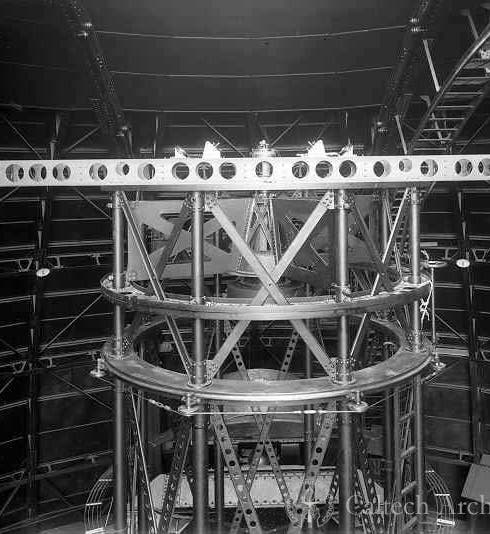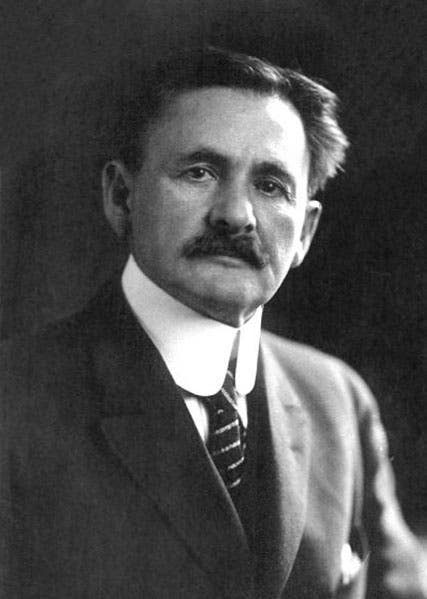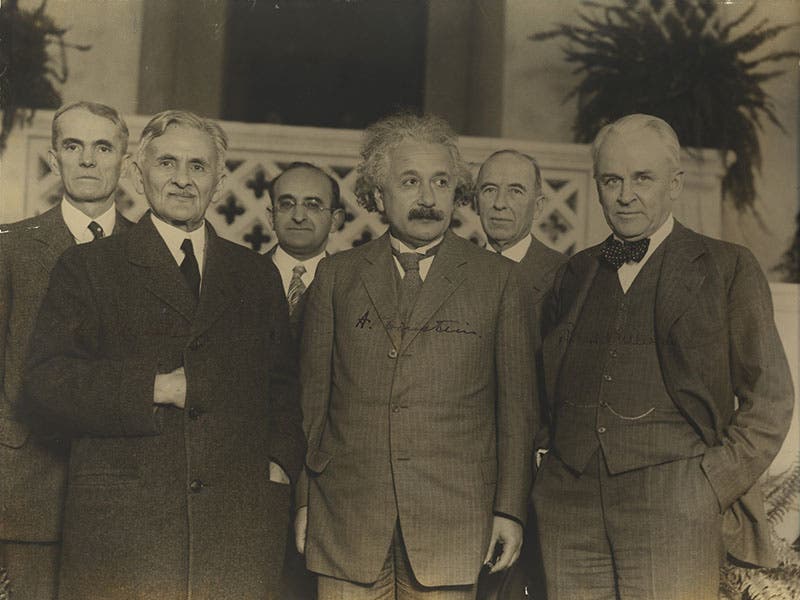Scientist of the Day - Albert Michelson
Albert A. Michelson, an American physicist, was born Dec. 19, 1852. Michelson is best known as the lead eponym of the "Michelson-Morley experiment" of 1887, an experiment that notoriously failed to measure the speed of the Earth through the ether, the supposed medium that pervades all space and carries electromagnetic waves, and thus failed to confirm the existence of the ether. We told the story briefly when we featured the trailing eponym, Edward Morley, as our Scientist of the Day some years ago.
Although the 1887 experiment was a failure in the technical sense, the instrument that Michelson invented and used to make the measurements, the interferometer, was a great success. In fact, Michelson received the Nobel Prize in Physics in 1907 for his work in interferometry. Thirteen years later, Michelson, using a new interferometer of his own design, in collaboration with his assistant, Francis Pease, performed an experiment that WAS successful. It was, in fact, historic: Michelson and Pease were the first to measure the diameter of a star. Pease was an observational astronomer working at Mt. Wilson Observatory in Pasadena, California, at a time when the observatory was sporting a brand new telescope, the 100" Hooker reflector. Michelson designed a twenty-foot interferometer, essentially a long bar with mirrors mounted on it, and he and Pease installed it on the front of the giant telescope (first image). An interferometer utilizes the principle that two light beams that travel different distances will interfere with each other, causing fringes of light. The distance between the fringes will reveal the difference in light path. Light coming from different regions of a star that is very large should travel different distances, and should therefore produce interference fringes.
Their target was Betelgeuse, a giant star in the constellation of Orion. Michelson and Pease succeeded in observing interference fringes; their measurements yielded an angular diameter for Betelgeuse of 0.047" of arc. Depending on one's calculation of the distance to Betelgeuse (a matter of some dispute), this corresponds to a diameter of at least 240 million miles. So if Betelgeuse were exchanged for our Sun, we could wish upon a star without going outside our front door.
When Albert Einstein came calling at Mt. Wilson in 1931, Michelson managed to secure a prominent place in the photograph that was inevitably taken at every institution Einstein visited (third image). Michelson is at the left, warming his hand in his coat. His counterpart on the other side of Einstein is Robert Millikan, the first president of Cal Tech, who won his own Noble Prize in 1923, and who was our Scientist of the Day earlier this year.
The other photograph of Michelson (second image) shows him at about the time he received his Nobel Prize.
Dr. William B. Ashworth, Jr., Consultant for the History of Science, Linda Hall Library and Associate Professor, Department of History, University of Missouri-Kansas City. Comments or corrections are welcome; please direct to ashworthw@umkc.edu.






![Using an astrolabe to measure the depth of a well, woodcut in Elucidatio fabricae vsusq[ue] astrolabii, by Johannes Stöffler, 1513 (Linda Hall Library)](https://assets-us-01.kc-usercontent.com:443/9dd25524-761a-000d-d79f-86a5086d4774/a998eb50-55d2-4a88-ace2-a50aa5fa86e7/Stoffler%201.jpg?w=210&h=210&auto=format&fit=crop)

